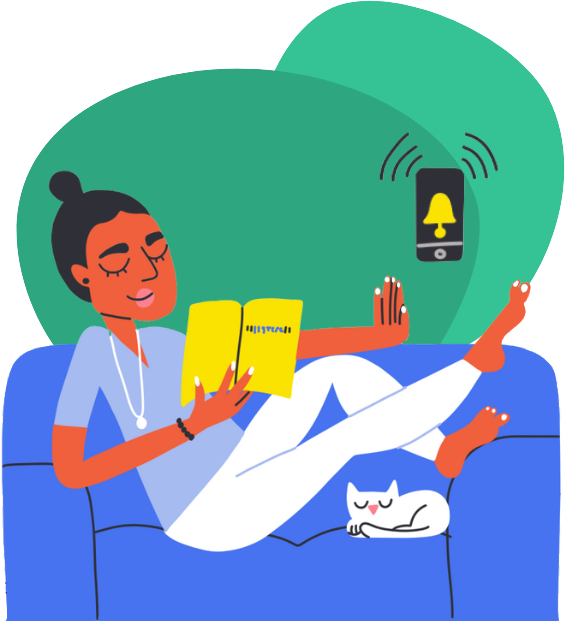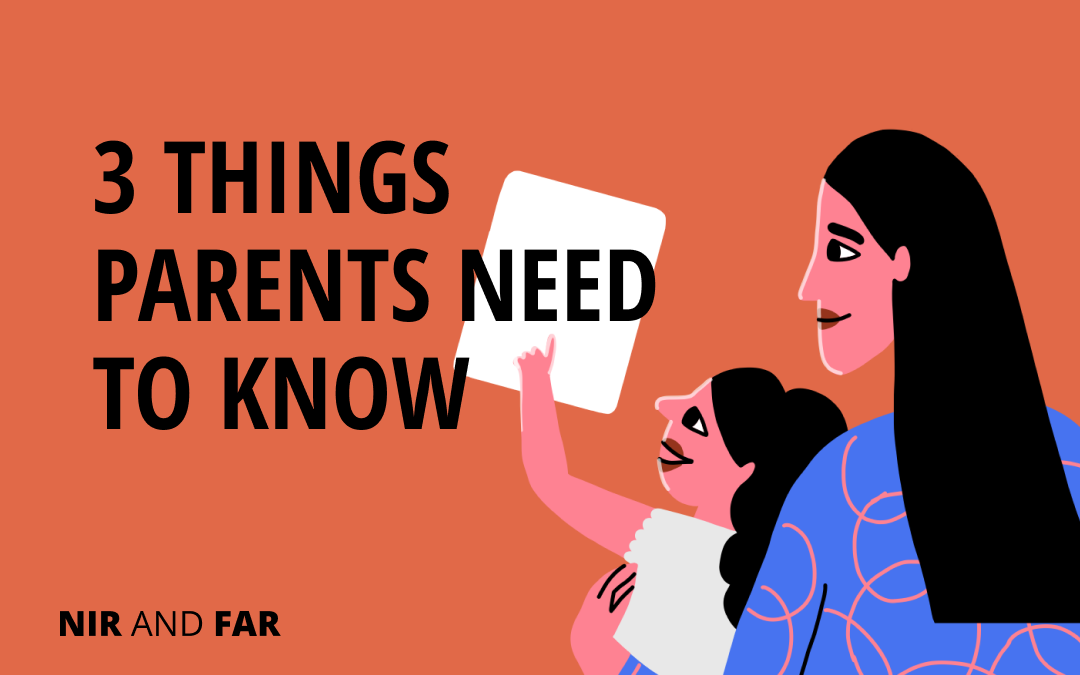
Nir’s Note: This article is a collaboration between Jonathan Haidt, a social psychologist at New York University’s Stern School of Business, and me. He researches moral and political psychology and business ethics. He has delivered four TED Talks and written two best-selling books. We’ve been friends for years, and our daughters often played together when I lived in New York City.
Haidt’s latest book, The Anxious Generation, is about how technology and changing parenting styles relate to an alarming rise in mental illness among teens. I don’t agree with his assertions related to social media causing the teen mental health crisis (I think it’s more of a symptom), but we are very aligned on the conclusions for what’s to be done to help our kids.
Recent research in social science has parents concerned about whether deep immersion in digital technologies is bad for their children.
A variety of studies find that rates of teen anxiety, depression, and self-harm have risen since 2012 in the U.S., the U.K., and Canada, although the evidence that this rise was caused by smartphones and social media is hotly debated.
It may take another decade for researchers to reach agreement, but parents need guidance now if their kids are to develop a healthy relationship with technology.
To limit or not to limit, that is the question many parents are asking. The question has become even more pressing after the Covid-19 pandemic normalized children spending more time indoors and on their devices.
Haidt and I are participants in the debate, and we are to some extent on opposing sides. In The Anxious Generation, he points to social media—and the option it provides for kids to withdraw from social interactions and other stressors—as a major obstacle to healthy psychological growth.
On the other hand, my book Indistractable concludes that tech overuse is a symptom, not the cause of the problem. I ask parents to understand the deeper reasons children seek to escape through digital distractions.
Though we have different opinions on the effects of technology use, one thing we have in common is our role as fathers to energetic gadget-loving teens.
In fact, we first met each other at an event in New York City’s Washington Square Park, where we staged a spontaneous public debate over the effects of smartphones on children while our daughters ran off to play.
When we stopped debating the studies and asked each other what we actually did in our own households, we found we abided by nearly identical principles.
Here we offer three commonsense, research-supported approaches for helping kids learn to control their use of technology instead of letting it control them.
Free Distraction Tracker
Reclaim control of your attention today.
Your email address is safe. I don't do the spam thing. Unsubscribe anytime. Privacy Policy.

1. Screens and sleep don’t mix.
The importance of sleep for health, well-being, and academic success is well established. Kids need lots of it. Yet researchers believe between 50% to 90% of kids don’t get enough.
External triggers like the pings, dings, and rings from smartphones can interrupt sleep? and damage mental health. Moreover, even if they turn off all notifications, some kids will use their digital devices under the covers after the lights are out or when they wake up during the night.
Not all technology needs to be removed from the bedroom, but anything that may interfere with sleep has to go.
While asking Amazon’s Alexa to read a bedtime story can help them drift off, scrolling through their Instagram feed can keep them up. Kids need to close their eyes and let darkness tell their brains that it’s time to switch into sleep mode.
It’s best to teach kids to put potentially sleep-interrupting devices outside their bedrooms at a fixed time each night that is at least 30 minutes before bedtime. Perhaps set up a central charging station in your home where everyone keeps their devices.
2. Delay social media until high school.
From Instagram to TikTok, tech companies have an age requirement to use their products. For most social networking apps, the minimum age is 13.
However, that age was not chosen based on health and safety considerations; it’s a remnant of privacy policies first implemented in the late 1990s when the U.S. Congress had to decide the age at which companies could collect and use data from children without their parents’ permission.
So 13 should not be considered a “safe” age. What age is safe? Nobody knows for sure, but the existing research offers us two suggestions for how to think about when to let kids have which kinds of technology.
First, when links are found between screen time and depression or anxiety, the links are usually strongest for social media use rather than watching videos, playing video games, or searching the internet.
“Screen time” encompasses many activities; the one that we should scrutinize most closely and delay the longest seems to be social media, where users generate content that is rated or commented on by dozens or hundreds of others. It’s perfectly fine to let elementary school kids watch age-appropriate videos on an iPad (in moderation).
Second, the increases in self-harm and suicide for American teens has been largest, percentage-wise, for preteen girls, which is a group that may be particularly vulnerable to the effects of cyberbullying and chronic social comparison that social media can facilitate.
We meet many parents who say that they didn’t want their preteens on Instagram, but they also didn’t want their kids to feel excluded, so they gave in and allowed them to open accounts by lying about their age. (“But Mom, everyone else does it!”) Each parent’s capitulation then puts more pressure on the next parent.
Until researchers can figure out why rates of hospitalization for self-harm have nearly tripled for American preteen girls, we think it wise to keep social media out of elementary and middle schools.
Let kids deal with the awkward beginnings of puberty, and let them master basic skills of face-to-face social interaction before they dive into the social networks. What’s the rush?
The only social network kids should have before high school should be IRL–that’s “in real life” for those of us who didn’t grow up with a cellphone.
Both of us agree that “free play”–the physical interactions and games kids invent when free from the direction of parents, teachers, or coaches–is among the most valuable activities that kids can engage in.
Of course, time for free play with friends has been curtailed during the pandemic, but research shows that time for free play has been declining for decades. To give kids what they need, parents should make more time for free play, ideally outdoors.
Given the research on the importance of free play to children’s psychological well-being and the dangers of overprotection or “mollycoddling,” free play may be their most important extracurricular activity, and it’s important to make more time for it once the pandemic has passed.
3. Agree on a time budget.
Touch-screen devices engage us like no other consumer product. Their quick feedback, beautiful design, and endless possibilities draw children as well as adults to reach for them habitually. We may intend to stay for just a few minutes yet often fail to put them down for hours.
Of course, tech companies designed their products to do that, as I described in my book on habit-forming products, Hooked. If you and your child don’t set clear policies, these apps will keep you both using them longer than you intend–but we’re not powerless.
The solution, we both found, is to talk with our children about how they want to spend their days. There’s only so much time, so work with your child to think through how much of it should be spent doing homework, playing sports, and being with the family as well as how much is worth spending watching videos or playing games online.
Haidt and his kids set a fixed number of hours per day and then used the Apple Screen Time feature to help the kids enforce it. Within that limit, each child could do whatever he or she wanted (other than open a social media account). Once Haidt’s family began using Screen Time this way, the daily struggles ceased, the kids learned to manage their own screen time rather than hide it from their parents, and the kids began playing more with each other rather than slinking off separately with their devices.
For my daughter and me, the solution was also using tech to limit tech. After asking my 12-year-old how much time she felt was appropriate, she asked for 45 minutes of extracurricular screen time per day.
That time doesn’t include screen time spent homeschooling, Kindle reading, or chatting with grandparents, but it does include games and videos. She enforces her own limits by asking Amazon Alexa to set a timer to let her know when her time is done.
By teaching her to set her own timer to a number that she chose, Daddy doesn’t have to be the bad guy, and your kid builds a skill that will last a lifetime.
Simple philosophy, simple rules.
Despite our differences, Jon and I have each developed similar philosophies with similar rules in our own households. We both love technology ourselves, and we want our children to gain the benefits–including sheer fun–of these nearly magical devices and apps.
But because these technologies are so alluring and because time spent with them comes at the expense of other activities, we have developed these three simple rules in our own households:
- All screens out of the bedroom before bedtime.
- No social media until high school.
- Work out a screen time budget in a way that helps children develop their own sense of agency and self-control.
The goal of setting such rules should be to help kids cultivate good habits and make wiser decisions even when their parents are not around.
Related Articles
- Schedule Maker: a Google Sheet to Plan Your Week
- Habit Tracker Template in Google Sheets
- The Ultimate Core Values List: Your Guide to Personal Growth
- Timeboxing: Why It Works and How to Get Started in 2024
- An Illustrated Guide to the 4 Types of Liars
- Hyperbolic Discounting: Why You Make Terrible Life Choices
- Happiness Hack: This One Ritual Made Me Much Happier

